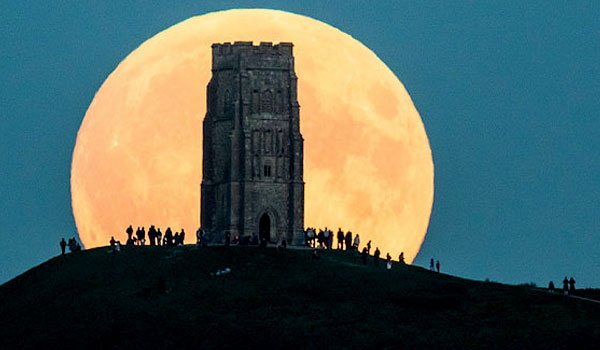A supermoon occurs when the Moon is in the closest part of its orbit to Earth, meaning it appears larger in the sky.
The eclipse - which made the Moon appear red - has been visible in North America, South America, West Africa and Western Europe.
This phenomenon was last observed in 1982 and won't come again until 2033.
Skywatchers in the western half of North America, the rest of Europe and Africa, the Middle East and South Asia were expected to see a partial eclipse.
From the UK, observers saw the Moon pass through the Earth's shadow in the early hours of Monday morning. In North and South America the eclipse was seen on Sunday evening.
In a total lunar eclipse, the Earth, Sun and Moon are almost exactly in line and the Moon is on the opposite side of the Earth from the Sun.
As the full Moon moves into our planet's shadow, it dims dramatically but usually remains visible, lit by sunlight that passes through the Earth's atmosphere.
As this light travels through our planet's gaseous envelope, the green to violet portions get filtered out more than the red portion, with the result that light reaching the lunar surface is predominantly red in colour.
Observers on Earth may see a Moon that is brick-coloured, rusty, blood red or sometimes dark grey, depending on terrestrial conditions.
-BBC







